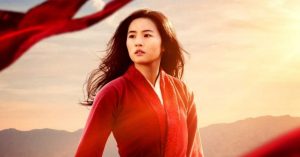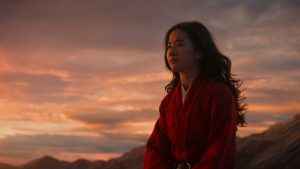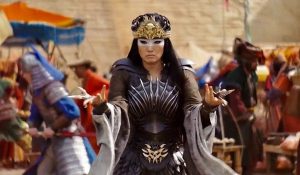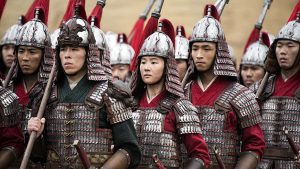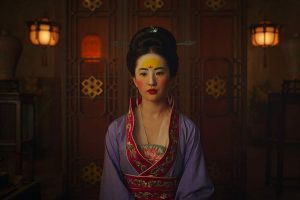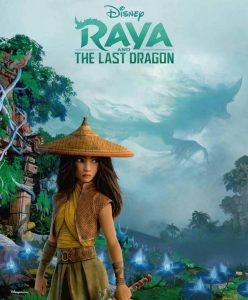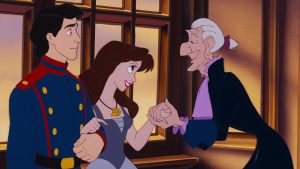For a while, the only official material we’ve seen from Disney Animation’s upcoming epic Raya And The Last Dragon is a few pieces of stunning concept art, one poster that wasn’t meant to leak, and a new poster released yesterday in anticipation of this morning’s first trailer release. And today, I am both surprised and relieved to discover that this is one of the few cases where the finished film actually seems to look just as good as – if not better than – the already beautiful concept art.
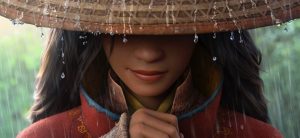
Set in the lush, vibrant kingdom of Kumandra, the first trailer for Raya gets off to a good start instantly, with a stringed instrument providing haunting, atmospheric background music over scenes of our brave young heroine, Raya, – voiced by the talented yet criminally underrated and mistreated Kelly Marie Tran, making a brave comeback after her role as Rose Tico in Star Wars made her the subject of cyberbulling and targeted harrassment by racists – while she prepares for the fight of her life. We see a wide range of different landscapes and locations throughout Kumandra in the trailer, most notably a palace or temple complex perched on a tall, arch-shaped rock formation which appears to be taking some architectural influence from real-life locations in Southeast Asia such as the temples at Bagan in Myanmar. Raya And The Last Dragon will become Disney’s first film set in Southeast Asia, and follows a pattern established over the past several years by Disney in that it stars a bold, capable, adventurous princess in the lead role – though, to be fair, it’s not entirely clear from the trailer if Raya is a princess by birth, and if that will make her ineligible to join the official Disney Princess line-up.
She might pull a Mulan and simply get in because she earned the title on her own. In the trailer’s first thirty seconds, we see Raya donning the outfit of a warrior meant for stealth missions (she has an entire room full of weapons, which I hope to see explored to the fullest): and then embarking on one such stealth mission herself, leaping from rooftops in the rain and vanishing into a network of deep, subterranean tunnels which presumably lie beneath the aforementioned palace/temple. The entire sequence is gorgeously animated, exquisitely filmed, and evocative of action films and spy thrillers. After a hold-up in a tunnel full of traps (falling nets rather than the usual spikes jutting from walls or disappearing floor-tiles), Raya reaches her destination – a massive, circular chamber housing what I have to imagine is the “Dragon Gem” she mentions later in the trailer as the magical artifact she’s sworn to protect: but on this particular occasion, she has company. A warrior is already there before her, wearing a fanged dragon mask to hide their features, and engages her in combat – although the warrior wields a large, wavy-bladed sword called a kris, Raya is using a martial arts style which employs two short staves: this could be Arnis, a fighting style popular in the Philippines, but which is believed to draw on influences from throughout Indonesia, Malaysia and India. The fight between the two warriors is interspersed throughout the rest of the trailer, with Raya and her opponent evading each other in a sort of dance.
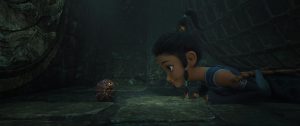
From there, we jump to a desert setting – which is interesting, because Southeast Asia isn’t really known for its deserts. Raya, now carrying her very own kris, is on a quest to find the Last Dragon of Lumandra, as she informs us through narration, so this could perhaps take place further afield, maybe even in India or China: not that it will matter much to Raya, who is lucky to have on her side a large pangolin/pillbug hybrid creature named Tuk Tuk, whom we are introduced to as an adorable baby in the opening sequence but is already enormous when we see him carrying Raya through the desert at high speeds. This, coupled with Raya telling us that she trained her whole life to become the guardian of the Dragon Gem makes me think that her fight in the cavern isn’t with an enemy, but instead a ritual she must have undergone to become said guardian – some sort of “passing the torch” ceremony meant to prove her worth and strength. But it seems like, despite her best efforts, something bad is happening to Kumandra and the Dragon Gem isn’t enough to keep several different kingdoms or clans united: these are the four groups we see moments later attending an event held by a man and a young girl who is probably his daughter and undoubtedly Raya. Maybe she is a Princess by birth after all. While a few of these groups might just be there to provide worldbuilding, two at least look like they are probably important to the story: the group dressed in dark green, equipped with a small army of elephants and led by a long-haired man who looks a bit like the warrior in the cavern; and the group to their left, dressed mostly in white, led by a very regal woman with a striking haircut, who come with a bunch of giant dog…wolf…creatures. A little hard to tell what’s going on there, but I am very intrigued. Will we get huge battles in this movie with war elephants and some mythical beasts? I hope so!
The trailer leaves us with only a tantalizing glimpse of the Last Dragon – through a colorful illustration in a scroll and a fleeting, feathery silhouette. But far more striking is the kaleidoscopic title card, which shows us tiny, blue-hued hints of other things I already can’t wait to see in clearer detail: Raya, standing on a cliff, looking out towards a huge staircase carved into the side of a mountain; and a mace carved into the shape of a writhing dragon. Raya looks to be the most heavily-armed Disney Princess in history, and I hope she gets to use all of that weaponry at some point: assuming the warrior in the cavern is not an enemy but rather a mentor or ritual opponent, there’s no sign of any other villain – except perhaps in the scroll, where we see the Last Dragon locked in combat with a black and purple swirl of cloud. This black and purple motif is possibly mirrored in the cavern, which is filled with glowing purple flowers which cover the walls and hang from the ceiling: but don’t seem to be the same glowing flowers we saw in the concept art and leaked poster, as those were bright blue. My takeaway from this is simply that we should be on the lookout for all sorts of significant botanical specimens in this film. I do also want to point out that I genuinely hope there’s a physical villain in Raya And The Last Dragon, only partially because I still feel cheated that we never got an epic third-act battle in either Moana or Frozen 2.

So what do you think? How do you feel about this first trailer, and how excited are you to see Raya in action? Share your own thoughts, theories and comments in the comments below – and if you come from the Southeast Asian region, please feel free to share any information about your own culture that you feel may have influenced the film!
Trailer Rating: 8.5/10
